










































































This past Christmas brought a blast of cold winter weather like we haven’t seen in several years. As we’ve come to expect when that kind of weather hits, people worked tirelessly across much of the country to keep the lights on and to restore power where and when it was lost.
Planners, engineers, and system operators worked diligently day and night to address frozen equipment and fuel supply shortages and to make needed adjustments to meet the high demand for electricity. Power plant employees worked around the clock to keep their plants running while wind chills dipped down near 40 below zero, creating challenges to keep critical equipment operating.
The high winds resulted in scattered power outages and broken power lines across Ohio and the entire Midwest and created brutal and dangerous working conditions for lineworkers tasked with making repairs to restore needed electric service.


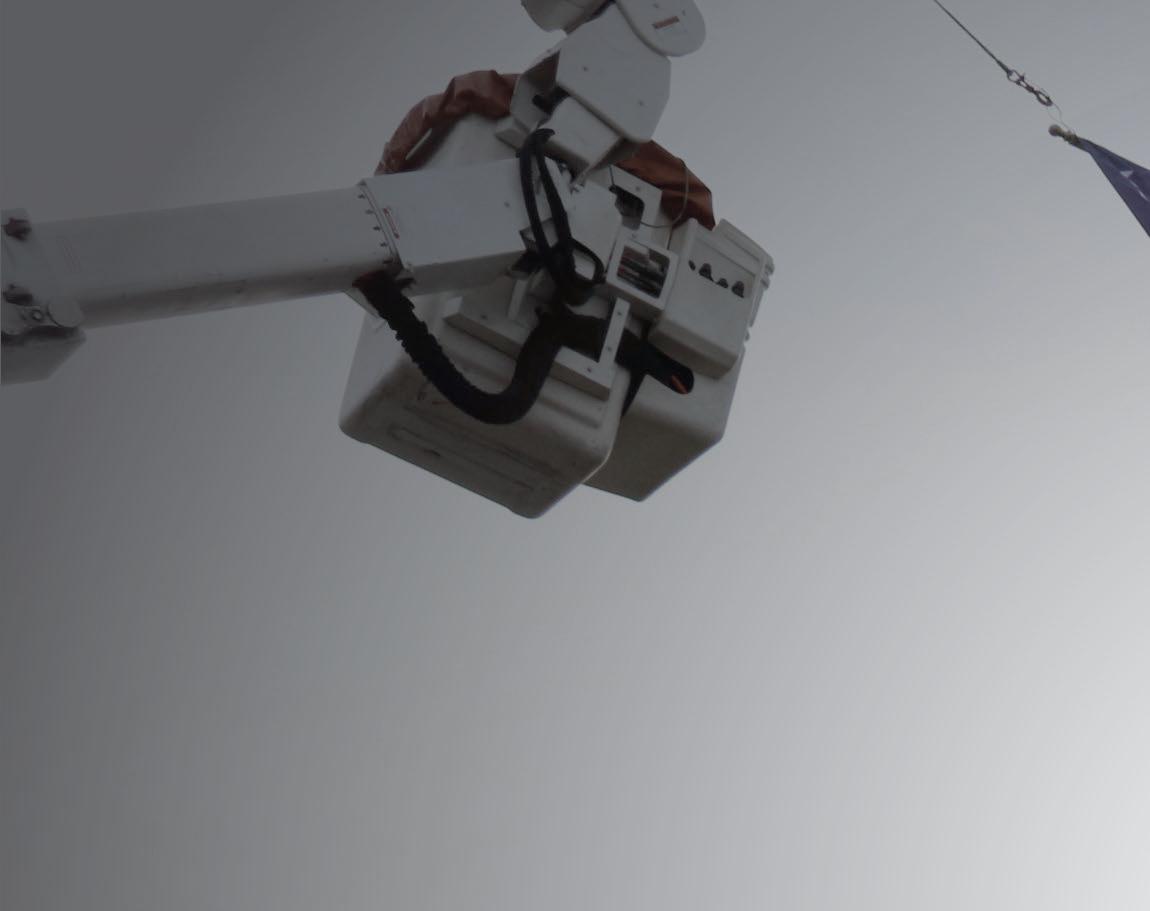
As our electric system was stretched to its limits (once again), the market price of electricity exploded to 50 times its normal level. It was difficult to come to terms with that skyrocketing expense.
Tragically, however, money was not the highest cost. One young lineworker, Blake Rodgers, lost his life while working to restore electric service to members of Buckeye Rural Electric Cooperative in southern Ohio.



Like nearly all of you, I did not know and never met Blake Rodgers. We can only pray for, and offer condolences to, his family and friends who will miss him the rest of their time on Earth. And we can honor the service and sacrifice of electric cooperative employees everywhere who work to provide this most essential and life-sustaining service to our homes and businesses. Thanks to all of them.
And God bless Blake Rodgers. May he rest in peace.

Pat O’Loughlin PRESIDENT & CEO OHIO’S ELECTRIC COOPERATIVES
We honor the service and sacrifice of electric cooperative employees everywhere who work to provide this most essential and lifesustaining service.

6677 Busch Blvd. Columbus, OH 43229 614-846-5757

www.ohiocoopliving.com
Patrick O’Loughlin President & CEO
Caryn Whitney Director of Communications
Jeff
McCallister Managing Editor Amy Howat Associate Editor Crystal Pomeroy Graphic DesignerContributors: Margaret Buranen, Colleen Romick Clark, Getty Images, Randy Edwards, David Gattie, W.H. “Chip” Gross, Catherine Murray, Craig Springer, and Margie Wuebker.
OHIO COOPERATIVE LIVING (USPS 134-760; ISSN 2572-049X) is published monthly by Ohio Rural Electric Cooperatives, Inc. It is the official communication link between the electric cooperatives in Ohio and West Virginia and their members. Subscription cost for members ranges from $5.52 to $6.96 per year, paid from equity accruing to the member.
POSTMASTER: Send address changes to editorial and advertising offices at: 6677 Busch Boulevard, Columbus, OH 43229-1101. Periodicals postage paid at Pontiac, IL 61764, and at additional mailing offices. Nothing in this publication may be reproduced in any manner without written permission from Ohio Rural Electric Cooperatives, Inc. All rights reserved. The fact that a product is advertised in Ohio Cooperative Living should not be taken as an endorsement. If you find an advertisement misleading or a product unsatisfactory, please notify us or the Ohio Attorney General’s Office, Consumer Protection Section, 30 E. Broad St., Columbus, OH 43215. Periodicals postage paid at Columbus, OH, and at additional mailing offices.
National/regional advertising inquiries, contact Cheryl Solomon American MainStreet Publications 847-749-4875 | cheryl@amp.coop Ohio-based advertisers contact Rheta Gallagher 614-940-5956 | rgallagher@ohioec.org
Cooperative members: Please report changes of address to your electric cooperative. Ohio Cooperative Living staff cannot process address changes.
Power play: National interests are best served by an all-of-the-above energy approach. 8

A look at yesteryear: Ohio artist Gary Stretar paints rural landscapes as they once looked. 10 WOODS, WATERS, AND WILDLIFE

Nothing succeeds like Success: The incredible, and fraudulent, tale of a long-forgotten Lake Erie shipwreck.



Spice of life: Cinnamon, once more valuable than gold, is still a treasured ingredient in most everyone’s kitchen.


LOCAL PAGES News and information from your electric cooperative.


What’s happening: February/ March events and other things to do around Ohio.

Beautiful barns: Our readers sought out some of the best rural landscapes the state has to offer.
Visit Ohio Cooperative Living magazine online at www.ohiocoopliving.com! Read past issues and watch videos about our articles or our recipes. Our site features an expanded Member Interactive area where you can share your stories, recipes, and photos and find content submitted by other co-op members across the state.

During an unprecedented crisis in NASA’s Apollo program, Ohio native and Apollo 13’s flight director, Gene Kranz, looked out across his mission control room and said: “OK, let’s everybody keep cool. Let’s solve the problem, but let’s not make it any worse by guessing.”

Composed, rational thinking. It’s crucial when problems are unknown, unfolding, and likely to compound with bad decisions. It’s also needed in the current debate around America’s energy and electric power sectors.

The U.S. economy, the largest and most important industrialized economy in the world, was built and currently stands on abundant, reliable energy resources. Fossil fuels, nuclear power, and renewables have electrified America, energized its transportation sector, provided high-temperature industrial heat for manufacturing, and bolstered its military — the world’s most powerful and lethal.




However, climate change concerns are reorienting America’s energy and electric power debate to carbon reduction, and policies are being proposed for an energy transition away from fossil fuels and toward renewables. While nuclear power is not excluded in all transition proposals, nuclear is generally marginalized in favor of the preferred resources — renewables.
Never before has the U.S. debated eschewing the conventional energy resources on which its economy stands. And for good reason.
Energy resources and electricity aren’t merely market commodities or climate change issues — they’re foundational to America’s national security. And it has been generally understood that a hallmark of America’s energy and national security legacy is an abundant, domestic supply of diverse energy resources to provide the U.S. with flexibility and resilience in times of economic disruption and geopolitical disturbance.
This is critical for ensuring a resilient electric power grid: storable coal and nuclear to provide consistent baseload power; flexible natural gas for responding to minute-by-minute fluctuations in demand; and zero-carbon, cost-competitive renewables to fill in when available. Diverse resources, while not interchangeable, are crucial as each resource provides unique operational characteristics that ensure resilience.

The national security value of energy, however, extends beyond U.S. borders. America is facing some of the greatest global challenges in its history, with energy embedded in many of them.

Russia has invaded Ukraine and weaponized oil and natural gas to create severe shortages in Europe and supply disruptions globally. Russia has also established itself as a global leader in civilian nuclear exports — a position once occupied solely by the U.S. but lost, in part, because of policy decisions in the 1990s.
China, through its Chinese Communist Party (CCP), has emerged as the most serious threat to U.S.
security as it seeks to become the world’s greatest superpower. To that end, the CCP is deepening oil and natural gas ties with Russia and the Middle East while monopolizing the global market on minerals and metals used in manufacturing solar panels, electric vehicles, and batteries — the very technologies prioritized in the proposed U.S. energy transition. At a more comprehensive level, China is leveraging its Belt and Road Initiative to help emerging nations industrialize their economies around all energy resources, including fossil fuels and nuclear power.
Over the past decade, the U.S. has established itself as a global leader in oil and natural gas production. In doing so, it has achieved a level of energy selfsufficiency while establishing important energy partnerships with key allies and emerging economies around the world. However, as the U.S. considers restructuring its economy around carbon reduction, China, Russia, and other authoritarian nations aren’t debating energy as a climate issue. They’re debating it as an instrument of national power to advance their interests — interests that often are in opposition to America’s. Consequently, a U.S. divestment from fossil fuels will create vacuums in global energy trade — which will be filled by energy-rich nations eager to displace the U.S. in any way they can.
Climate change is a threat that should not be dismissed, but there’s only so much the U.S. can













do unilaterally. From 2000 to 2020, global carbon emissions increased 35.7%, with over 78% of this originating in China. During this same period, total U.S. carbon emissions decreased 22.8%, while carbon emissions from the U.S. power sector decreased 37.1%. This is a global issue with global sources and global impacts, and those impacts will not stop at U.S. borders simply because the U.S. has decarbonized its own economy. In fact, an electric power sector based predominantly on weather-dependent energy resources may be highly vulnerable to impacts of a changing climate.


This said, the U.S. should focus on shoring up all critical infrastructure subject to rising sea levels, droughts, and any other enduring climate shifts that could disrupt critical services.
When Gene Kranz looked across that mission control room, he could see myriad instrument panels. But it never crossed his mind to try and get that crew home safely by focusing on just one panel. Yet, America is considering a complete restructuring of its economy to dial down a single gauge on the complex instrument panel that is America’s economy and national security.



Given that America is facing multiple security challenges from multiple competitors on multiple fronts, this is worse than guessing. It’s gambling against a stacked deck.













Throughout the ages, there have been many important advances in mobility. Canes, walkers, rollators, and scooters were created to help people with mobility issues get around and retain their independence. Lately, however, there haven’t been any new improvements to these existing products or developments in this field. Until now. Recently, an innovative design engineer who’s developed one of the world’s most popular products created a completely new breakthrough . . . a personal electric vehicle. It’s called the Zinger, and there is nothing out there quite like it.

“What my wife especially loves is it gives her back feelings of safety and independence which has given a real boost to her confidence and happiness! Thank You!”

–Kent C., California


The first thing you’ll notice about the Zinger is its unique look. It doesn’t look like a scooter. Its sleek, lightweight yet durable frame is made with aircraft grade aluminum so it weighs only 47.2 lbs. It features one-touch folding and unfolding – when folded it can be wheeled around like a suitcase and fits easily into a backseat or trunk. Then, there are the steering levers. They enable the Zinger to move forward, backward,



turn on a dime and even pull right up to a table or desk. With its compact yet powerful motor it can go up to 6 miles an hour and its rechargeable battery can go up to 8 miles on a single charge. With its low center of gravity and inflatable tires it can handle rugged terrain and is virtually tip-proof. Think about it, you can take your Zinger almost anywhere, so you don’t have to let mobility issues rule your life.
The Zinger folds to a mere 10 inches.
Why take our word for it? Call now, and find out how you can get a Zinger of your very own.

When young Gary Stretar wasn’t playing sports, he was busy drawing something. He didn’t grow up to become an athlete, but two childhood influences cemented that second pastime into a rewarding career.
Stretar grew up in the western suburbs of Cleveland. Inspired by proximity to Lake Erie, he painted mostly seascapes in watercolors. He took art classes in high school and college, but didn’t major in art. He preferred creating realistic art to styles of art that were popular at the time. Today, he displays his work in a gallery on his property, and travels to sell his works at various shows around the country.



While he credits his wife, Mary, also a talented painter, for improving his painting, it was two early influences that gave him his inspiration.
The first was his teacher in both fifth and sixth grades, Miss Paul. Stretar says he didn’t learn much more in college art classes than what Miss Paul had already taught him. “Teachers don’t always challenge kids to learn more, but she did,” he says. “She wasn’t afraid to teach us



[advanced art techniques of] perspective, line, color values. A lot of us in her classes went on to art careers.”

The second influence was a schoolmate (and still friend) who invited Stretar to visit his family’s farm in Holmes County. Stretar ended up spending countless hours on that 150-acre tract, painting and visualizing. “It was a completely different world for me,” he says.

After the Stretars married, they continued living in the Cleveland area for a while, but they dreamed of one day living in an old house in the country. When they realized their dream and moved to a converted dairy farm near Spencer — where they are members of LorainMedina Rural Electric Cooperative — Stretar switched from painting those Lake Erie seascapes, mostly using watercolors, to painting rural landscapes, primarily in oil.
“I found that oils gave me more flexibility in what and how I could paint,” he says.
Stretar’s art studio is a converted dairy barn. Their 1835 Greek Revival house overlooks Mary’s extensive flower and vegetable gardens.
STORY BY MARGARET BURANEN; PHOTOS COURTESY OF GARY STRETARMany landscape artists set up their easels outside and paint their surroundings, a technique known as plein air, or they photograph a scene to paint later. Not Stretar. “Almost never do I paint [while] on-site,” he says. “And rarely do I photograph a scene to paint later.”
Instead, he makes a small, 3-by-5-inch sketch of what he wants to include in a painting. Then later, he starts painting scenes from memory. For authenticity of detail — such as the angle of a barn’s roof — he relies on the approximately 100 books on styles of rural architecture that he owns.






Stretar’s aim in his painting is “to make a farm look the way it did before the 1860s, so that early farmers would recognize it.”
His paintings portray farms before mechanization, when farmers used only oxen or draft horses. Because he doesn’t include people or animals, his art conveys both a sense of timelessness and a bit of mystery.
Stretar sells as many winter landscapes as he does paintings showing all the other seasons combined. He

notes that “the winter color palette is closer to those of the Dutch Masters,” who influence his style of painting, along with painters of the Hudson River School and French Barbizon School.
Stretar says that the most rewarding part of creating his paintings is “when a client says that a painting ‘takes me back to when I was a child.’”
Besides their artist parents, the Stretars’ five children learned about art from their maternal grandmother. Her watercolor paintings became illustrations for many greeting cards.
Several of the Stretars’ children are full- or part-time artists today. Daughter Ruth, a hairdresser, sells her watercolors at her salon. Son Luke has his own painting studio in Richfield. Son Caleb is a sculptor and painter. “They had a great art teacher, Dean Shaffer, here at Black River High School,” Stretar notes.
To view Stretar’s paintings, visit www.garystretar. com. His gallery is open by appointment only.

Ohio artist Gary Stretar paints rural landscapes as they once looked.WOODS, WATERS, AND WILDLIFE
There has likely never been a more ironic name for a prison ship than Success. The vessel — which was a Lake Erie icon for more than a decade — was successful in another sense: She was the focus of the longest and largest nautical hoax in the history of the Great Lakes, and possibly all of North America.
Measuring 135 feet in length and having three masts, Success was built in 1840 in India during the days of sail. Early in her long career, she made trips transporting immigrants from England to Australia, then functioned for several years as a prison ship, anchored in Sydney’s Woolloomooloo Bay. But it was when the ship’s owners put her up for sale that Success sailed into nautical history.

A group of promoters purchased the ship, planning to sail her around the world for the public to board and
tour — for a price, of course. But before her debut, they believed Success needed a bit of refurbishing.
They brought aboard some unusual equipment: handcuffs, leg irons, branding irons, metal straightjackets, a triangle-shaped whipping post, even a medieval torture device known as an iron maiden.
And they painted on the sides of the hull, in large black letters, the words “Convict Ship.”
None of the apparatuses had ever been on the ship previously, let alone used, but no matter. The promoters even went so far as to erroneously add half a century to the ship’s age. So now, Success had not only been converted to a “convict ship,” complete with all her ghastly accoutrements, but was also the “oldest and most historic ship afloat.”

The public ate it up, no questions asked.
Sailing from England, Success arrived in Boston in slow 99-day transatlantic trip — after which her captain for the voyage complained, “She sails like a bale of hay.” She toured major U.S. cities along America’s east and west coasts and the Gulf of Mexico, then sailed up the Mississippi, stopping at major ports along the way. Next, making her way up the Ohio River, she visited Cincinnati, Wheeling, and Pittsburgh in 1918 and 1919. In 1923, Success Lakes, where she toured for the next five years.
By 1924 — and despite protests from the Australian government about its entirely made-up history — Success was such a popular attraction at Toledo that local papers reported, “Every day since its arrival here, it has been visited by good-sized crowds.” Other Lake Erie ports included Lorain, Cleveland, and Sandusky, where she often docked for weeks at Cedar Point amusement park.
Her owner in 1925, a Captain David H. Smith, described his ship as “a tremendous paying game.” A conservative estimate of the ship’s income during the 1920s was $450,000 annually, equivalent to many millions in today’s dollars.
Unfortunately, the good times were not to last. With the stock market crash of 1929, the largesse of the Roaring ’ ended, ushering in the Great Depression. During the Americans struggled to make ends meet, let alone have money enough left over for entertainment. The crowds dwindled, then eventually stopped coming altogether, and Success popularity and into disrepair.
Purchased by a businessman in Port Clinton, Ohio, in the fall of 1945, the decrepit old hulk was being towed from Cleveland to Port Clinton when she ran aground and stuck fast on a sandbar about a half-mile from shore off the Port Clinton swimming beach. There she remained mired until the evening of July 4, set her afire just to watch her burn.
More than 1,700 shipwrecks lie at the bottom of Lake Erie, only 277 of which have been located. Success is one of those that have been identified, with what is left of her wooden keel, ribs, planking, and metal parts lying in just 8 to 10 feet of water. Today, divers are welcome to investigate Success and 32 other shipwrecks in Ohio’s Lake Erie waters.
Chip Gross is Ohio Cooperative Living’s outdoors editor.

To learn more about ghost ships and their locations, visit www.ohioshipwrecks.org.

The incredible, and fraudulent, tale of a long-forgotten Lake Erie shipwreck.
2 Trays – Diced Chicken Breasts (2.5 lb.)

















2 Trays – Chicken Breast Strips (2.5 lb.)













2 Trays – Thin-Sliced Chicken Breasts (2.4 lb.)






1 Package – Organic Ground Chicken (1.5 lb.) Chicken























FREE –2 More Trays Diced Chicken Breasts (2.5 lb.)
FREE – 2 More Trays Chicken Breast Strips (2.5 lb.)

Cinnamon, once more valuable than gold, is still a treasured ingredient in most everyone’s kitchen.







Prep: 15 minutes | Bake: 45 minutes | Servings: 8 ½ cup granulated sugar 2 tablespoons ground cinnamon ¼ cup butter, melted


2 16.3-ounce cans buttermilk biscuits (refrigerated tubes) 2 large tart apples, peeled and chopped 1 cup powdered sugar 1 tablespoon milk
In a large bowl, mix granulated sugar and cinnamon. Cut each biscuit into 4 pieces and add to the bowl with the cinnamon and sugar, along with the apples. Toss many times to coat. Heat oven to 350 F. Transfer coated biscuits and apples into a greased bundt pan. Pour butter evenly over top, then press down lightly on the top. Bake 40 to 45 minutes or until golden brown across top and a toothpick comes out clean. Cool 10 minutes, then run knife around edge of pan to loosen. Place heatproof serving plate over pan and flip over. Slowly loosen pan from bread. Whisk together powdered sugar and milk into an icing. Drizzle icing over bread. (If icing doesn’t drizzle easily, add a little more milk.) Bread is easy to serve and eat — just pull apart into chunks with your hands!
Per serving: 556 calories, 22 grams fat (10 grams saturated fat), 15 milligrams cholesterol, 1,237 milligrams sodium, 84 grams total carbohydrates, 4 grams fiber, 8 grams protein.
Prep: 15 minutes | Cook: 20 minutes | Servings: 6 ½ cup bread crumbs Small sweet onion, minced 4 cloves garlic, minced 1 tablespoon ground coriander 2 teaspoons cinnamon
1 teaspoon dried mint 1 teaspoon dried oregano 1 teaspoon salt
teaspoon black pepper 1 lemon, zested and juiced

1 pound lean ground beef or lamb
In a large bowl, mix together breadcrumbs, onion, half of the minced garlic, coriander, cinnamon, mint, oregano, salt, pepper, and lemon zest. Add in ground meat and egg, incorporating with your hands. If you have some extra time, refrigerate mixture for 30 to 60 minutes — it will help the meatballs hold their shape.
Form mixture into 1-inch meatballs. Dredge each in flour, coating lightly then shaking off excess. Heat olive oil in medium skillet over medium-high heat. Add some meatballs, leaving space in between them. Cook 5 to 7 minutes, rolling them around to cook evenly. Transfer meatballs to a plate covered with a paper towel to soak up excess oil. Repeat with remaining meatballs. Make Tzatziki sauce by mixing together the remaining half of the minced garlic, lemon juice, sour cream, cucumber, and dill. Dip meatballs in the accompanying Tzatziki sauce as an appetizer, or serve both on top of a pita, Greek salad, or rice bowl for a full meal.
Per serving: 355 calories, 20 grams fat (9 grams saturated fat), 111 milligrams cholesterol, 551 milligrams sodium, 18 grams total carbohydrates, 2 grams fiber, 27 grams protein.
Prep: 10 minutes | Bake: 60 minutes | Servings: 2

Stu ed sweet potatoes
2 medium sweet potatoes
2 tablespoons cinnamon butter (recipe at right)
4 tablespoons chopped pecans
1 banana, sliced
½ cup miniature marshmallows
Cinnamon butter
1 stick unsalted butter, softened
1 tablespoon honey
½ tablespoon powdered sugar
1½ tablespoons ground cinnamon
NOTE: Try the cinnamon butter on pancakes, mu ns, biscuits, toast, and peanut butter sandwiches. The stu ed sweet potatoes are perfect for a decadent breakfast or warming winter dessert.
Preheat oven to 400 F. Poke some holes in the skin of the sweet potatoes with a fork and place on a baking sheet. (Sweet potatoes leak sticky syrup when baking.) Bake 45 to 60 minutes, or until potatoes are soft when lightly squeezed. Meanwhile, make cinnamon butter by combining butter, honey, powdered sugar, and cinnamon with an immersion blender or food processor. Set aside.
Remove potatoes from oven and cool on baking sheet for a few minutes until they’re easier to handle. Slice potatoes in half lengthwise and fluff/mash the insides a bit with a fork. Slather cinnamon butter over the open potatoes, tuck in banana slices and sprinkle with marshmallows, pecans, and some extra cinnamon. Turn oven to broil and place baking sheet back in the oven, keeping a close eye. Warm and toast marshmallows to your desired color. Serve while hot.
Per serving: 521 calories, 22 grams fat (8 grams saturated fat), 31 milligrams cholesterol, 254 milligrams sodium, 80 grams total carbohydrates, 12 grams fiber, 5 grams protein.
Prep: 5 minutes | Cook: 45 minutes | Servings: 4
1 tablespoon olive oil
1 large onion, diced
2 large carrots, diced
3 to 4 cups chopped Swiss chard (separate stems from leaves)
3 cloves garlic, minced
2 tablespoons fresh grated ginger (peeled)
1 teaspoon ground cumin
1 teaspoon ground coriander
1 teaspoon paprika
½ teaspoon cayenne
1 14.5-ounce can tomatoes
3 15-ounce cans chickpeas, drained and rinsed
1 lemon, juiced
3 cups vegetable stock
2 cinnamon sticks

2 bay leaves
½ cup golden raisins (optional)
Heat olive oil in large pot over medium-high heat. Add onion, carrots, and Swiss chard stems and sauté, 5 to 7 minutes. Add garlic, ginger, cumin, coriander, paprika, and cayenne and sauté another minute or so. Add tomatoes, chickpeas, lemon juice and broth, then stir. If vegetables aren’t fully covered, add a bit of water. Submerge cinnamon sticks and bay leaves. Bring to a boil, then lower heat to medium-low, cover and simmer 30 minutes. Remove cinnamon sticks and bay leaves, stir in Swiss chard leaves and raisins, cook another 5 minutes or so, and serve.
Per serving: 472 calories, 7 grams fat (1 gram saturated fat), 0 milligrams cholesterol, 835 milligrams sodium, 89 grams total carbohydrates, 6 grams fiber, 19 grams protein.

Have you tried one of our recipes? Do you have a recipe to share with other Ohio co-op members? Visit the Member Interactive page on www.ohiocoopliving.com to find recipes submitted by our readers and to upload yours.

www.ohiocoopliving.com
While you’re there, check out a video of a few of our recipes being prepared.






In the 1930s, only about 10% of U.S. rural households had electricity. With a lot fewer homes, farms, and businesses per square mile than in the cities, there was hardly any profit to be made by bringing electric power to these areas. Investor-owned utilities simply did not want to get involved in something that wouldn’t yield them a profit.
Left without any support from the large utility companies, rural communities would eventually take matters into their own hands. By pooling their resources and utilizing the newly signed Rural Electrification Act, rural residents formed electric cooperatives — ensuring that everyone in the community had access to the benefits of electricity. Like cooperatives across the country, Firelands Electric was also established not for the benefit of a few individuals, but rather for the good of an entire community.
Owned, operated, and governed by the very people we serve, Firelands Electric has a strong bond with our members. Advancements in equipment, materials, and technology may have altered our methods for delivering power over the years, but our focus on community remains unchanged.
Firelands Electric Cooperative provides local community support in a multitude of ways. Some are as simple as putting on safety programs or participating in the annual July Fourth parade. Others include sponsoring ads in the sports programs of area schools or donating to the junior fair programs. Providing assistance for local honor bus trips, 4-H camps, and students pursuing higher education is also part of our annual contributions.
Even grants from Firelands Electric’s largest charitable program, Operation Round Up, are kept local. In 2022, $40,210 was awarded to 12 organizations and individuals in need located in Ashland, Huron, Lorain, and Richland counties. Everything from volunteer fire departments and food pantries to low-cost health services have benefited from this 28-year-old program.
While our local community will always lie at the heart of the cooperative, Firelands Electric recognizes that we are also members of some much larger communities — those that encompass our state, our country, and the world. Although our focus remains local, we still make an effort to improve the quality of life in the vast world in which we live.

 McNaull GENERAL MANAGER
McNaull GENERAL MANAGER

Since 2018, Firelands has sent 13 linemen to assist six other electric co-ops throughout Ohio and the U.S. They put in 1,016 man-hours to help restore power due to damage from ice, wind, and hurricanes. During the past six years, three linemen have also volunteered to help villages in remote areas of Guatemala in Central America build their own distribution systems, bringing electricity to hundreds for the first time.
Two additional programs that impact the larger community include the cooperative’s participation in USO Ohio’s Step Up for Soldiers annual drive and the collection of aluminum pull tabs for Ronald McDonald House Charities of Northeast Ohio’s Akron location. Firelands Electric has been involved with these programs for 15 and 13 years, respectively. Make sure to check out the following two pages to read more about the co-op’s involvement with these outstanding charitable organizations.
Community has been a vital part of Firelands Electric’s history and culture since the cooperative’s founding in 1936. Whether local or global, we remain dedicated to the well-being of our community. In fact, our commitment to community is stronger than ever.
For more information on Firelands Electric’s community involvement, click the Community tab at www.firelandsec.com.




 Dan
Dan



Since 2009, Firelands Electric Cooperative has served as a collection site for aluminum pull tabs for Ronald McDonald House Charities (RMHC) of Northeast Ohio, which has facilities in both Akron and Cleveland. Over the past 13 years, co-op members, employees, and the community have donated 1,324 pounds of aluminum. That’s more than 1 6 million individual tabs!
RMHC recycles the pull tabs, which contain higherquality aluminum than cans, and the money is added to their Family Fund. In 2021, RMHC received over 22,550 pounds of pull tabs and added $10,000 to this fund, which is used to supply meals and toiletries to the families staying at the houses. The money also allows RMHC to purchase special-occasion items, such as birthday gifts, to give a bit of normalcy to those going through an extremely stressful and emotional time.
With more than 260 volunteers, RMHC provides a supportive home away from home for families with children receiving medical treatment at Akron Children’s Hospital, Cleveland Clinic Children’s, University Hospitals Rainbow Babies and Children’s Hospital, and MetroHealth Medical Center.
The Akron location, where Firelands has traditionally donated its tabs, was initially built in 1985. The original 17,000-square-foot house could accommodate 20 families. In April 2018, a 48,000-square-foot expansion increased that number to 42 rooms.
Each hotel-like room sleeps four and has a private bath. The house also provides common areas, such as a living room, patio, and playground, and includes full-service laundry and daily meals to make young patients and their families more comfortable during their stay. Families are never turned away due to financial reasons because each room’s $100-per-night cost is covered by donations.
In 2021, 620 families spent over 12,000 nights at RMHC’s Akron and Cleveland houses. Combined with the organization’s other programs, including family rooms within the hospitals, a mobile unit, and


the online resource site RedTreehouse.org, RMHC served nearly 22,500 families. Financial support for these programs is funded in large part by donations. In fact, contributions from individuals and businesses like Firelands Electric account for 42% of RMHC’s annual budget, while grants and other charitable donations make up another 26%. While McDonald’s restaurants were instrumental in the initial building of the houses, they currently provide for just 15% of RMHC’s operating expenses.
the online resource site 500





































Aluminum pull tabs may be dropped off at Firelands Electric Cooperative’s o ce, located at 103 Industrial Drive, New London, during regular business hours, Monday through Friday, 7:30 a.m. to 4 p.m.


In addition to collecting aluminum pull tabs, those who would like to help RMHC can donate items from the facility’s wish list, sponsor a room for the night, or contribute to the meal program. Additional information on these programs and several others can be found online at www.rmhcneo.org/ways-to-give.
 Firelands Electric delivered approximately 239,375 aluminum pull tabs, weighing 191.5 pounds, to RMHC’s Akron location in late October. Pictured (l-r) are Firelands’ director of communications and information technology, Andrea Gravenhorst, and RMHC Akron’s family services manager, RaNita Mitchell.
Firelands Electric delivered approximately 239,375 aluminum pull tabs, weighing 191.5 pounds, to RMHC’s Akron location in late October. Pictured (l-r) are Firelands’ director of communications and information technology, Andrea Gravenhorst, and RMHC Akron’s family services manager, RaNita Mitchell.









For the 15th straight year, Firelands Electric Cooperative partnered with local radio stations WLKR-FM and K96-FM to collect donations for USO Ohio’s Step Up for Soldiers annual drive.
From Veterans Day through mid-December, members of Firelands Electric and the community dropped off care package items at the co-op’s o ce in New London. Donated items included razors, deodorant, toothpaste, shampoo, playing cards, chewing gum, hard candy, beef jerky, trail mix, and other snacks and hygiene essentials. Collected items were then sorted and packaged by USO Ohio and sent to our state’s military personnel and their families, serving both domestically and overseas. The cooperative community’s generosity in 2022 made it possible for Firelands to put together one of its largest donations to date.
South Central Local Schools delivered more than 10 boxes of donated items to Firelands’ o ce. For the past five years, the school has collected care package items from the students, staff, and families of the district. Their efforts are led by Central O ce Clerk Aimee Lloyd and her husband, Mike. The couple became involved with the Step Up for Soldiers program after their son, Collin, received support from the USO during a flight delay while serving with the Ohio National Guard in 2018.

Firelands also received many donated items from co-op employees and the community at large. In addition, o ce employees purchased $245 worth of items. The money was raised as part of a long-standing tradition where employees are permitted to wear jeans on designated workdays in exchange for a $20 per month charitable donation.
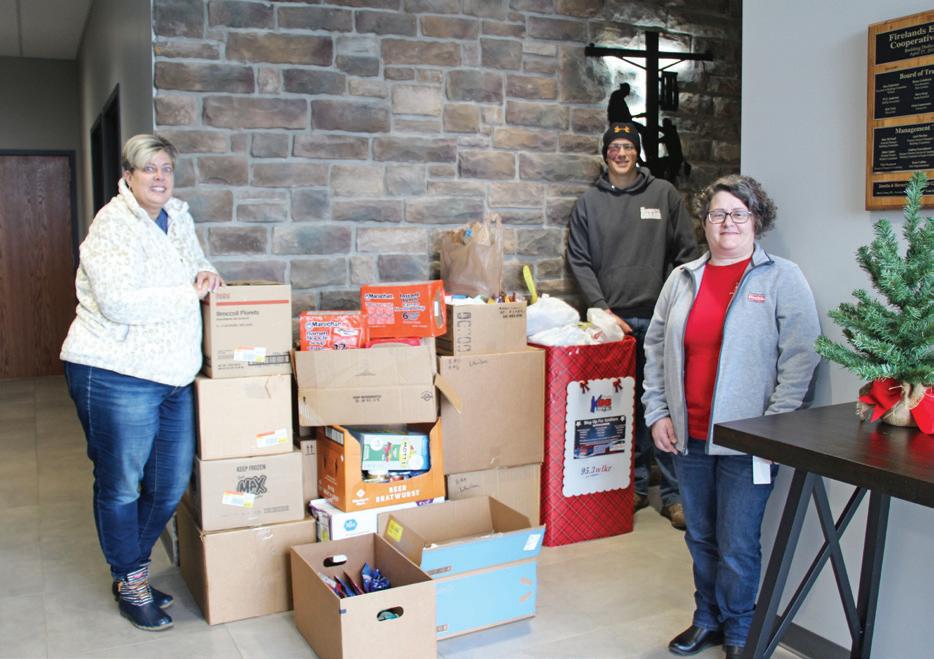
The USO supports military families through more than 250 locations nationwide. The organization serves Active Duty, Guard, and Reserve members in all branches of the military. USO Ohio is a nonprofit organization that relies solely on the kindness of the citizens, organizations, and corporations throughout the state and receives no government funding. Visit the USO Ohio website at https://ohio.uso.org to learn more or to make a tax-deductible monetary donation.


 South Central Schools’ Central Office Clerk Aimee Lloyd (left), her son Collin (back), and Firelands’ Communications and Member Relations Specialist Tracy Gibb (right) stand among some of the numerous donations made to the 2022 USO Ohio Step Up for Soldiers drive.
WLKR/K96-FM Station Manager Bill Forthofer (left) and Account Executive Lexi Sarrica (right) load the radio station’s van with care package items donated by the co-op’s employees, members, and the community.
South Central Schools’ Central Office Clerk Aimee Lloyd (left), her son Collin (back), and Firelands’ Communications and Member Relations Specialist Tracy Gibb (right) stand among some of the numerous donations made to the 2022 USO Ohio Step Up for Soldiers drive.
WLKR/K96-FM Station Manager Bill Forthofer (left) and Account Executive Lexi Sarrica (right) load the radio station’s van with care package items donated by the co-op’s employees, members, and the community.


Firelands Electric places a tremendous value on education — it’s actually one of our Seven Cooperative Principles.
Each year, we award $10,500 in scholarships, sponsor delegates on the Youth Tour to Washington, D.C., recognize the academic achievements of middle school students through the A Team, provide numerous electrical safety demonstrations, and much more.
The cooperative also recognizes that quality education requires passionate and devoted teachers. That’s why we’re holding our first-ever Terrific Teachers contest this month!
From Feb. 1 through March 9, Firelands Electric is asking families to nominate their school’s most dedicated teachers. Those teachers with the most nominations in each of two grade categories will win a plaque and a prize package for their classroom. The package will be age-appropriate for their class and will include energy-themed books, games, and activities valued at approximately $100. Runners-up in each grade category will receive a package worth $50.
Winners will be announced in mid-March and be featured in an upcoming issue of Ohio Cooperative Living and on Firelands’ social media outlets.
1. Visit www.firelandsec.com/contests and complete the online form to make a nomination. You will need to know the teacher’s first and last name, school, and grade they teach. We’ll also ask you to provide your name and contact information in case we have any questions.

2. Nominations may also be made by emailing the above information to members@firelandsec.com or mailing it to Attn: Terrific Teachers Contest, Firelands Electric Co-op, P.O. Box 32, New London, OH 44851.
3. Teachers can be nominated in one of two grade categories: Kindergarten–Grade 2 and Grades 3–5.
4. Please submit only one nomination per grade category, per family.
5. Teachers must be educators at one of the nearly 20 schools that serve students living within Firelands Electric Cooperative’s territory. (See website for a complete list of eligible schools.)
For questions regarding this contest, please contact our member services department at members@firelandec. com or 1-800-533-8658.

















of December drawing receive Amazon gift cards


Education helps shape the leaders of tomorrow. That’s why Firelands Electric includes it as one of our seven core principles. The A Team is a cooperative program designed to encourage students in their pursuit of academic excellence. Students in grades 6–8 are invited to participate and be recognized for their hard work and dedication to education.


How you can win
Students in grades 6–8 who have a minimum of three A’s on their most recent report card and whose parents or guardians are members of Firelands Electric Cooperative are eligible to apply. A copy of the report card should be submitted by mail to Attn: The A Team, Firelands Electric Cooperative, P.O. Box 32, New London, OH 44851. Report cards may also be emailed to members@firelandsec.com.
Be sure to include the student’s name, age, school, grade, address, phone number, parents’ name(s), and email address on your entry. Complete program details are also available at www.firelandsec.com/team.

One of Firelands Electric Cooperative’s most important ongoing projects is right-of-way clearing, or vegetation management. Keeping power lines clear of tree limbs and brush helps the co-op:
• Reduce power interruptions
• Improve service reliability
• Restore outages more quickly
• Avoid unexpected and costly repairs
• Create a safer environment for crews and the community
A right-of-way is the strip of land underneath or around power lines and transformers that Firelands Electric Cooperative has the right and responsibility to maintain and clear. We must keep trees and other vegetation a proper distance from equipment in order to prevent harm to people or disruptions in electric service. Specifications vary, but a general rule of thumb for maintaining a safe right-of-way is 20 feet of clearance on either side of primary lines. The area above poles and wires should be kept completely clear of all vegetation. Shrubs and other plants should be kept a minimum of 10 feet away from pad-mounted, or ground, transformers.
Trees and small animals cause a substantial number of power outages every year. While the co-op has little control over the animals, our crews can take steps to reduce the impact of downed trees. Clearing the right-of-way is vital to keeping our members’ power on. Branches and limbs that come into contact with power lines can cause voltage fluctuations, blinking lights, or even outages for cooperative members.
Right-of-way clearing also keeps your family safer by ensuring that tree branches and vegetation do not become energized due to close contact with a downed
power line or other electrical equipment. With the ability to carry up to 34,500 volts, a power line touching a tree branch can be incredibly dangerous — even deadly. Be mindful when around trees that are close to power lines, and make sure children know that climbing trees near power lines or playing near pad-mounted transformers is extremely dangerous.
Our responsibility Firelands Electric maintains 995 miles of line that bring power to over 9,100 homes and businesses. This gives Firelands Electric’s right-ofway maintenance crews a big job to do. Each year, we make a plan for tree contractors to work in specific areas of the cooperative’s service territory to try to keep ahead of any potential issues.
Miller SYSTEM RIGHT-OF-WAY COORDINATOR


If a tree invades the right-of-way, the cooperative’s vegetation management team will trim back branches and brush using a combination of large and small equipment. We also occasionally use chemical control methods to stop low-growing plant species that can climb poles and trees and interfere with power lines.
If you have existing trees on your property that are in danger of making contact with the cooperative’s power lines, we encourage you to notify us. For more information on the cooperative’s vegetation management program, questions about tree trimming, or assistance in selecting the right tree to plant, visit our website at www.firelandsec.com/right-way-clearance or contact Firelands Electric’s System Right-of-Way Coordinator James Miller at 1-800-533-8658





Avoid planting within 20 feet of power lines. When planting within 20 feet is unavoidable, use only shrubs and small trees.

Tree pruning zone


In 2023, Firelands Electric Cooperative members will elect board trustees to represent districts 1, 3, and 6. Any member of the co-op who is in good standing and resides in a district with an open spot on the board is welcome to run for that position.
Nomination petitions to become a candidate for the 2023 elections will be available at the Firelands Electric office beginning Feb. 1. Potential candidates are required to submit an election application and collect 20 member signatures from within their district by Friday, March 24. A map of all board districts is also available at www.firelandsec.com/board-trustees.
The Firelands Electric Cooperative Board of Trustees meets monthly to review the financial and operational data of your electric cooperative. Board members hear and discuss reports from the cooperative’s general manager and department supervisors, as well as provide guidance for management decisions.
The duties of a Firelands Electric trustee include:

• Attend all regular meetings on the fourth Tuesday of each month, the cooperative’s annual meeting in June, as well as other state, regional, and national meetings and training sessions.
• Determine the cooperative’s rate schedules and fees.
• Approve major work plans for ongoing maintenance and improvement of the co-op’s distribution system.
• Approve contracts for financing, services, and power supply.
• Monitor the financial condition of the cooperative and make decisions on budgets and capital credits.
Representing your fellow members as a Firelands Electric trustee is an important job. Trustees must be dedicated and committed to the cooperative and its principles. They must strive to do what is best for the cooperative and all of its members, which may conflict with the desires of individual members or special-interest groups.
Additional information on the role of a Firelands Electric trustee and how you can become a candidate was mailed out to members of districts 1, 3, and 6 in January. If you have questions about becoming a candidate for trustee, contact our office at 1-800-533-8658.





A licensed electrician can help with a variety of home projects from lighting upgrades to full renovations. Keep the following tips in mind if you’re looking to hire an electrician.
1. Hire a licensed, qualified electrician for the job. Look for a master electrician to manage the project. Master electricians have the most experience and will often oversee the work of a journey-level electrician or apprentice.

2. Make sure the electrician is insured. Seasoned electricians know the importance of protecting themselves in case of an accident.
3. Read all the reviews. Hire an electrician that has several positive reviews — not just one or two. Read reviews on di erent sites, like Nextdoor, Yelp, and HomeAdvisor, and consider asking your neighbors for recommendations.
4. Determine your budget. Get two or three quotes. Knowing your budget upfront helps move the process along. Prices can greatly vary, so get at least two quotes.
5. Talk timeline. Some electricians accidentally overbook projects. If your job is time-sensitive, convey that early on and discuss a realistic timeline with the electrician.






Interested in renewable energy, but looking for a cost-effective alternative to installing solar panels on your home? Firelands’ OurSolar program could be the right solution for you!






Residential co-op members who would like to support renewable energy initiatives without the hassle and expense of installing rooftop solar can purchase electricity produced by OurSolar for a small per-kilowatt-hour (kWh) premium. Approximately 70 panels from Ohio’s recently expanded community solar program are still available to Firelands Electric Cooperative members. For complete details and answers to some of the most commonly asked questions, or if you would like to receive more information and a contract, visit www.firelandsec.com/oursolar-community-renewable-program.



During the cold winter months, we often seek out the comfort and warmth of home. While a good central heating system is designed to meet whole-house needs, members sometimes turn to space heaters for additional warmth. While using one can temporarily help boost the temperature and comfort level of a single room, consistent use over an extended period can increase winter heating bills significantly.
Radiant electric heaters typically include infrared heating elements. Nearby surfaces, including people, absorb the heat. Air in immediate proximity to the unit’s enclosure or cabinetry also aids in the transfer of warmth.
While they can be effective for temporarily adding warmth to a single room, using space heaters for prolonged intervals, or on a daily basis, is usually a poor choice when it comes to energy e ciency. Central heating systems are specifically designed to handle the needs of your entire home, while space heaters are not.
Space heaters are simply not an ideal solution for long-term home heating. For every unit of electricity that is consumed by these devices, they produce only one unit of heat, while a whole-house heat pump system can produce two or more units of heat for each unit of electricity used. This is why adding several space heaters to supplement your central heating system drives up your energy costs.
When it comes to e ciency, there are currently no space heaters among the list of ENERGY STAR-rated products. Firelands advises members to only use portable heaters in small spaces for limited periods to avoid wasting energy and increasing their electric bills.
Two types of space heaters are available for the residential market. Convective models circulate air within an enclosed space, while radiant heaters transfer warming energy directly to objects or people that are within close proximity to the unit.
If central heating is unavailable or inadequate, a convective heating unit can distribute heat relatively evenly throughout an enclosed space. For garages, workshops, workout rooms, or laundry areas, a convective heater used for a few hours a day or each week could be a good fit.
When using a space heater to warm a chilly room, it’s also important to make sure to do so safely. According to the National Fire Protection Association, space heaters are involved in four out of five home heating fire deaths each year. In addition, burn injuries associated with surface contacts send hundreds of people to emergency rooms.
Always set space heaters in locations clear of all flammable materials and out of reach of small children, pets, or anyone with impaired mobility.








Be sure to plug heaters directly into a wall outlet rather than using an extension cord or power strip. Most lightduty extension cords and surge strips are not designed to handle the amount of energy that a space heater requires and can overheat, causing a fire hazard. And never leave a heater unattended when you are not home or asleep.
Consider investing in a model that has tip-over safety features, which automatically shut off the power source in the event that the unit tilts beyond its upright position.
If you are looking to warm larger areas of your home, or a single area for a prolonged period, there may be
other alternatives. Sealing air leaks, adding insulation, or tuning up your heating system so it operates more e ciently are all more economical solutions. These options will save you more energy, and money, in the long run.
Firelands Electric Cooperative offers FREE home energy consultations to its members. If you would like help determining which energy e ciency improvements your home would benefit from, contact the cooperative’s Member Services Department at 1-800-533-8658 to schedule an appointment.
DO: Plug your space heater directly into the wall outlet.


DO: Keep your space heater at a safe distance (at least 3 feet) from kids, pets, and flammable items.
DON’T: Leave your space heater plugged in when you leave the house or go to bed.
Firelands Electric Cooperative’s board of trustees met Nov. 22 and covered the following items:
• Board President Dan Schloemer reported that the cooperative received 44 membership applications for approval by the board.
• General Manager Dan McNaull reviewed the reports for two recent safety and training events.
• Director of Operations Don Englet reported on recent activities and projects in the operations department, as well as progress on First Energy/AEP’s 69-kV line project in New London.
• The board discussed the 2023 trustee elections.
• McNaull reviewed the timeline of the cooperative’s 2022 safety culture initiative.
• The board discussed the Coulter substation project.
• McNaull reviewed North Coast Wireless’s broadband project, which will bring high-speed internet to a portion of the cooperative’s underserved members.
• Schloemer and McNaull reported on Buckeye and OEC meetings they recently attended.


• Director of Finance and Accounting Tabi Shepherd reviewed the October financials and reported on recent accounting and billing department activities.
• McNaull reviewed the monthly tree-trimming and outage reports.
• Director of Communications and Technology

Andrea Gravenhorst reviewed recent activities involving the member services and IT departments, including the status of the annual USO drive and cybersecurity testing.

Firelands Electric Co-op is democratically controlled and governed by local people committed to policies that result in a safe and reliable electric system, fair rates, financial responsibility, and superior member service.
The cooperative’s next board meeting is scheduled for Tuesday, Feb. 28. If you would like to attend the next scheduled meeting, please contact the Firelands Electric o ce at 1-800-533-8658.
Now you can finally have all of the soothing benefits of a relaxing warm bath, or enjoy a convenient refreshing shower while seated or standing with Safe Step Walk-In Tub’s FREE Shower Package!
✓ First walk-in tub available with a customizable shower
✓ Fixed rainfall shower head is adjustable for your height and pivots to offer a seated shower option










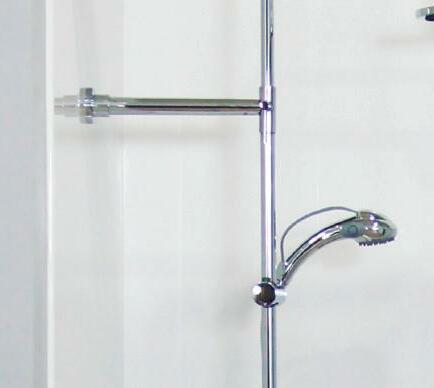






✓ High-quality tub complete with a comprehensive lifetime warranty on the entire tub




✓ Top-of-the-line installation and service, all included at one low, affordable price Now you can have the best of both worlds–there isn’t a better, more aff ordable walk-in tub!





Each of Ohio’s unique place names is a chapter in the state’s story.
BY CRAIG SPRINGERAn Ohio map reads like an autobiography. The names pinned to places — the towns, counties, watercourses, and junctures that you may have never even heard of — tell stories of experience, chance encounters, longings for a better future, or the wistful wishing for a place left behind. Some pay tribute to heroes of the past. Others are curious and comical, leaving one to wonder, “Uh, what were they thinking?”
The gouging push and soggy pull of glaciers and the long steady movement of water shaped the land we see today,
and strongly influenced names given the sinuous blue-line waters draining north to Lake Erie or south toward the Ohio River.
Then there’s the spilling of blood — the clash of cultures and struggle to possess what Native Americans, the British, and a fledgling United States of America all wanted to call their own.
Let’s consider the latter first.
Four Mile Creek, for example, rises in the uplands along the Indiana-Ohio state line, picking up the waters of small rills and runs and seeps. It bumps into glacial moraines and purls through pastoral farmsteads on its downhill destiny with the Great Miami River — by which time it has become a substantial stream. Its placid form and lyrical name belie the fact it was born from warfare.
In October 1791, the entirety of the U.S. Army set out from a freshly built Fort Hamilton (named to honor Secretary of the Treasury Alexander Hamilton) and nested on a bench of land above the Great Miami River. The autumn foray would become a march to massacre. The soldiers, in a slow slog north, cut a road in a wide swath through virgin forest. Four miles from the fort’s gate, the army camped for a night along a stream. The next day, three miles on, they crossed Seven Mile Creek. A month later, on the headwaters of the Wabash River, they met a confederation of Indian tribes and suffered a crushing defeat.
It became known as St. Clair’s Defeat. The battle site where upwards of 800 soldiers exhaled their last is today’s Fort Recovery. Those vanquished under the command of the Miami leader, Little Turtle, or the Shawnee leader, Blue Jacket — such as Arthur St. Clair, Richard Butler, and William Darke — live on in stream, county, and township names.
Of course, Native American place names also persist in Ohio. The difference is that they tend to be descriptive, rather than tributes to people or commemorative of experiences. “Miami,” of course, lives large in Ohio. According to linguist David Costa of the Myaamia Project at Miami University in Oxford, the Great and Little Miami river names include an adopted English use of the original Myaamia, meaning “downstream person.”
According to Costa, Miami Indians knew the Great Miami River as ahseni siipiiwi, literally “Rock River.” Lake Erie was known as ciinkwihtanwi kihcikami, literally “sea of the falls,” referring to Niagara Falls downstream. St. Mary’s River on the Indiana-Ohio state line was nameewa siipiiwi, literally “sturgeon river.”
You won’t find any of those on a map, though you will find numerous Anglicized versions of Algonquin and Iroquois words — Coshocton, for example, comes from the Lenape/Delaware word goschachgunk, which simply signified a river crossing.
Ohio has a fair number of communities with stilted names that speak to high aims of its early settlers. Akron derives from Greek for “high place.” Gallipolis evokes a sense of the Greek city-state self-governance. Xenia reflects the hospitality expected in the home in classical Greece.
Alert Station is a curious hamlet near Ross (formerly Venice, corrupted from Venus), northwest of Cincinnati (so-named after the Roman soldier-farmer Cincinnatus). Alert was and remains a crossroads. But those pioneer settlers valued literature and ensured early on they had a library populated with the classics, and the folks there were considered “alert,” as in “intellectual.”
Ohio had no shortage of volunteers answering President Polk’s call to action against Mexico in 1846. A good many Ohioans served in the Mexican War, and the effect of their return in 1848 was certainly felt in new place names. The soldiers may have desired to memorialize those killed in action, or they romanticized the places and people they had met in what is now New Mexico, California, and interior Mexico. Most prominent is Rio Grande, Ohio, pronounced “RYE-O Grand.” And there are the Buckeye burgs of Vera Cruz, Monterey, and Montezuma, as well as the City of Holy Faith: Santa Fe, Ohio.
One cannot consider the topic of Ohio’s place names without addressing those that leave you scratching your head. Ever heard of No Name, Knockemstiff, or Pee Pee Creek? All three exist in southern Ohio, and it’s the origin of the last that’s well-documented. Pee Pee Creek trickles through Pebble Township in Pike County, which had been named by Peter Patrick — who had carved his initials in a stream-side tree circa 1785
Ohio’s place names run the spectrum from commonplace to implausible. One can go to Russia, visit Rome, London and Paris, and take a drive through Mesopotamia — without ever leaving the state. Every place name relates to desires, experience and perception. And what they have in common across that spectrum is enchantment in the spirit of their origins.
Afaded sign inside this Darke County institution proudly proclaims the store motto: “A balanced diet is chocolate in both hands.” Sweetness certainly comes in all shapes, sizes, colors, and flavors at Birt’s Store in the village of New Weston.
The rustic shop typically stocks 350 varieties of candy as Valentine’s Day approaches. Decisions are even tougher at Christmastime, as the shelves get stocked with more than 525 varieties, according to third-generation owner Brad Birt.
Double-dipped chocolate peanuts, maple-filled chocolate peanut clusters, chocolate-covered caramels, and
























Brad Birt, representing the third generation of his family to sell candy from the Darke County store, displays some of the sweet treats available in the candy aisle

chocolate drops top the list of favorites. After all, the love of chocolate spans all seasons.







Birt’s grandfather, Harry Birt Sr., unwittingly started a family tradition in the 1920s when he added five cases of white peppermint lozenges, orange slices, and chocolate drops to his general store shelves. The candy arrived via caboose at a nearby train depot, but it was evident that crew members had sampled plenty along the way.
Harry Birt Jr., who came on board after World War II, recognized the importance of establishing a niche market in the form of more candy, fresh fruits and vegetables, and deli meats and cheeses. He initially used the family
station wagon to pick up orders directly from suppliers. Trucks came later.
“My dad believed people would come if you offered a great product at a reasonable price,” Brad Birt says. “We have built a reputation over decades, and you don’t try to fix something that isn’t broke.”

The store deals with dozens of suppliers who share a commitment to quality, requiring regular trips covering Ohio, Michigan, Indiana, Illinois, Kentucky, and Pennsylvania.










Holiday shoppers grab silver scoops and white paper sacks to make their bulk selections — though chocolates and other specialties are prepackaged at other times of the year.

“Tastes change with age,” Birt says. “Kids are into sour candies and gummy anything these days. Everybody else wants chocolate, chocolate, chocolate, or the candy they grew up with. Folks do a lot of reminiscing up and down the aisles.”








Tiered shelves offer a smorgasbord of chocolates: flavored creams, assorted fruits, nuts, fudge clusters, and even coated animal crackers and sandwich cookies. Tenpound slabs of chocolate and 5-pound chunks of caramel are popular with at-home candymakers.


















Individually wrapped candies like Tootsie Rolls, taffy, and Bit-O-Honey vie for space with flavored jelly beans, jumbo malted milk balls, divinity, old-fashioned hard tack candy, and 1-pound jawbreakers.

“My grandfather dealt with candy by the pound,” Birt says. “We deal with candy by the ton. Candy is our niche. It’s what keeps the doors open.”









Harry Birt’s Store, 501 Main St., New Weston. Open seven days a week. www.harybirtsstore.com, www.facebook.com/HarryBirtsStore; 937-338-3111.

You can’t always lie down in bed and sleep. Heartburn, cardiac problems, hip or back aches – and dozens of other ailments and worries. Those are the nights you’d give anything for a comfortable chair to sleep in: one that reclines to exactly the right degree, raises your feet and legs just where you want them, supports your head and shoulders properly, and operates at the touch of a button.






Our Perfect Sleep Chair® does all that and more. More than a chair or recliner, it’s designed to provide total comfort. Choose your preferred heat and massage settings, for hours of soothing relaxation. Reading or watching TV? Our chair’s recline technology allows you to pause the chair in an infinite number of settings. And best of all, it features a powerful lift mechanism that tilts the entire chair forward, making it easy to stand. You’ll love the other benefits, too. It helps with correct spinal alignment and promotes back pressure relief, to prevent back and muscle pain. The overstuffed, oversized biscuit style back and unique seat design will cradle you










in comfort. Generously filled, wide armrests provide enhanced arm support when sitting or reclining. It even has a battery backup in case of a power outage.







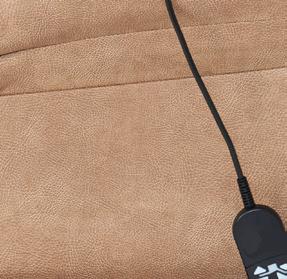






White glove delivery included in shipping charge. Professionals will deliver the chair to the exact spot in your home where you want it, unpack it, inspect it, test it, position it, and even carry the packaging away! You get your choice of Luxurious and Lasting Miralux, Genuine Leather, stain and liquid repellent Duralux with the classic leather look, or plush MicroLux microfiber, all handcrafted in a variety of colors to fit any decor. Call now!





“To you, it’s the perfect lift chair.
To me, it’s the best sleep chair I’ve ever had.”
— J. Fitzgerald, VA












 BY RANDY EDWARDS; PHOTOS COURTESY OF MAD RIVER MOUNTAIN
BY RANDY EDWARDS; PHOTOS COURTESY OF MAD RIVER MOUNTAIN
When he was 12, John Buchenroth received a Christmas gift of $10, which was a considerable sum in 1962. It turned out to be a life-changing gift for the Bellefontaine youngster. Three days later, he put on warm clothes and took his money to the area’s new Alpine ski resort, which had opened for its first season a few days before Christmas that year.
“It was my first day of skiing,” recalls Buchenroth, 73. “The lift ticket was a dollar-fifty, rental was a buck, my first lesson was a buck-fifty. And I fell in love with the sport.”
Sixty ski seasons later, Buchenroth is still in love — and he’s passed along his enthusiasm for skiing to thousands of beginners who have strapped on their first pair of skis at the Logan County resort now known as Mad River Mountain. Buchenroth is supervisor of the Ski and Ride School at Mad River, which celebrates its 60th anniversary this season.

Mad River has been owned by Vail Resorts since 2019, when the Colorado-based company purchased all 17 properties previously owned by Peak Resorts, Inc., including three other Ohio resorts. Mad River isn’t the oldest resort in Ohio — Snow Trails in Mansfield opened a year earlier — but it lays claim to being the largest in the Buckeye State, covering 144 acres, with a peak elevation of 1,460 feet above sea level.
The vertical drop is just 300 feet, a molehill compared to ski mountains out West (Vail, the flagship of Mad River’s corporate owner, boasts a vertical drop of 3,450 feet), but this humble Ohio ski hill has been the resort where generations of central Ohioans have learned to ski, either on their own or with their school ski clubs. Olympic and X Games snowboarder Louie Vito, who learned to ski at Mad River, went on to be a superstar. Most others simply move on to bigger mountains but bring their kids back to Mad River to get their start.
“We’re teaching kids and grandkids of people we have had in our programs,” Buchenroth says. Located in the tiny village of Valley Hi, just outside of Bellefontaine, Mad River Mountain offers 20 ski runs, from the beginner area at the base of the hill to steeper, more challenging slopes and one wooded glade. There is a terrain park for Alpine acrobatics and a tubing park touted as Ohio’s largest. With Ohio winters unpredictable for snow, snowmaking is a must at all Ohio ski resorts, and Mad River has 128 snow guns, capable of covering all 144 skiable acres.
The resort’s new-ish lodge opened in 2016 after a fire destroyed the original lodge in 2015. The new lodge has increased capacity, seating 800 hungry skiers in the cafeteria and about 200 in The Loft bar.

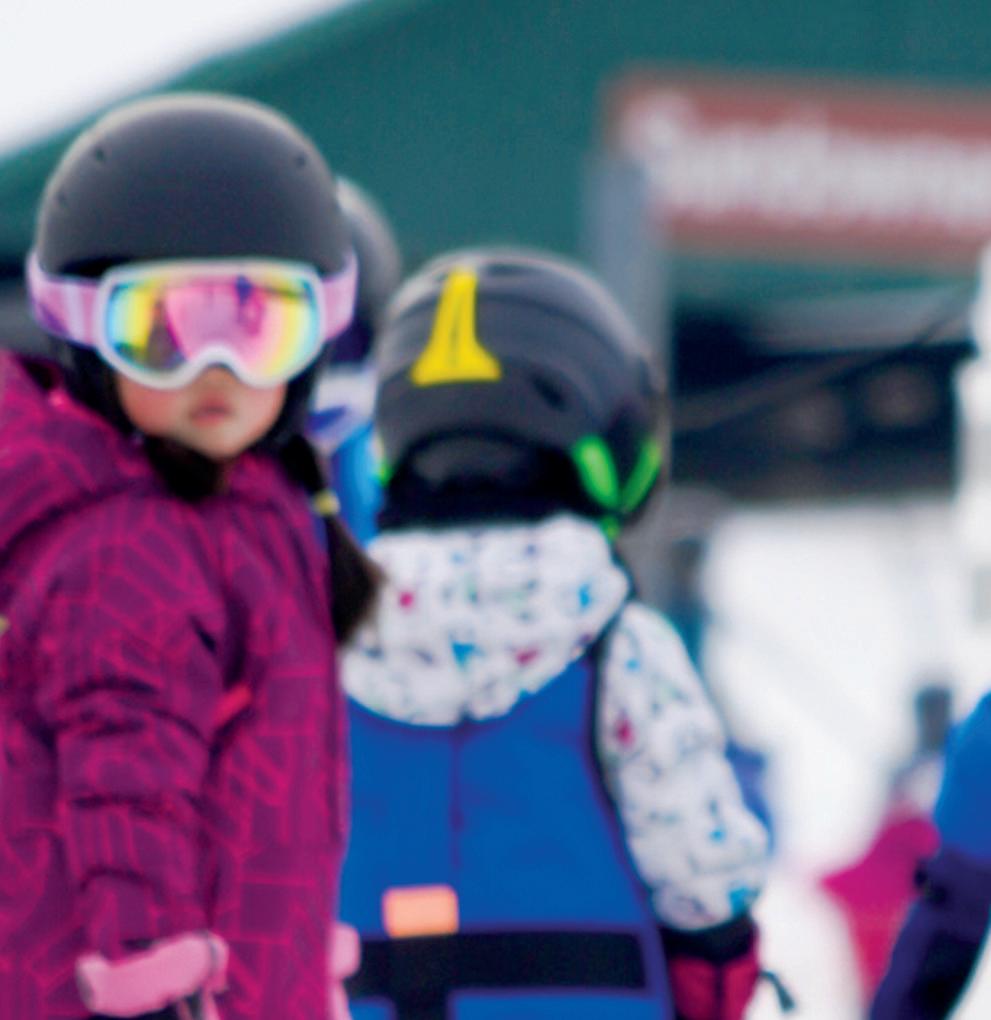


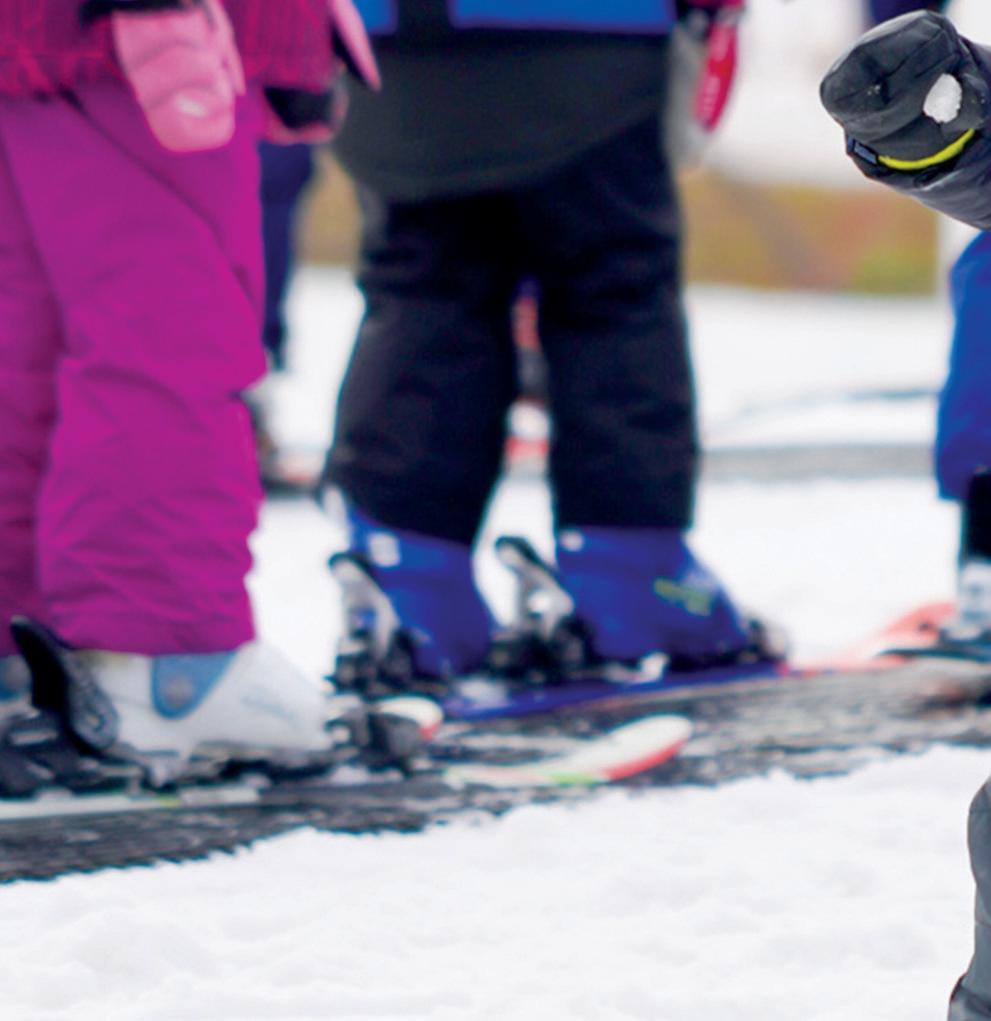




The first couple of years have been a bit rocky for the new owners. The ski industry nationwide took a big hit during the pandemic, and operations during the 2021–22 season at Mad River were curtailed due to labor shortages and warm weather in December, which delayed the resort’s opening until Jan. 6, says Larry Kuebler, general manager of Mad River.

“We got a late start [and] we took away some operating hours, and people were not thrilled with that,” he says. “I don’t blame them one bit.”
Kuebler was optimistic as he was preparing for the opening of the 2022–23 season. Vail Resorts promised a $20-an-hour minimum wage for all positions, and Mad River started the season fully staffed, which has allowed a return to normal operating hours. Plans for the 60th anniversary season include weekly events, expanded menu offerings in the lodge, and a return to live music in the bar.
Vail Resorts considers attendance figures to be proprietary, Kuebler said. Prior to the pandemic, the resort’s previous owners said publicly that the ski hill sees about 150,000 skier visits and 40,000 tuber visits per season. Most come from Columbus, Dayton, and other mid-Ohio locations.
“We have so many passionate skiers who have been skiing here for so long, and they’re proud to call it home,” Kuebler says.
Over the past couple of decades, downhill skiing has witnessed a participation slump as Baby Boomers are aging out of the sport and not as many younger people are picking it up. Keubler said Mad River’s response has been to focus on recruiting new skiers and getting them involved in the ski school.
“If we’re going to help the overall industry, we have to focus on getting them to love the sport as we do,” he says.
School groups can be found at Mad River every night of the week. Many young skiers learn the sport through their school ski clubs, including Brady Whiteside, 18, a graduate of Hilliard Davidson High School who started snowboarding at Mad River in the seventh grade.
He learned to ski from Mad River instructors, who “taught us the basics” and inspired self-assurance, Whiteside says, so that later, when he began traveling to ski the much longer and steeper runs at Colorado resorts like Winter Park and Arapahoe Basin, he had confidence in his ability.
“You can only prepare so much for those crazy trails [in Colorado], but they took me as far as I could [at a hill the size of Mad River].”
Now a freshman at Ohio State University, Whiteside says Mad River can seem small, after skiing the big western mountains, but he will be going back to the local hill this winter.
“It’s close, and when I go to Mad River, I’m going to snowboard with friends,” he says. “We make our own fun.”


































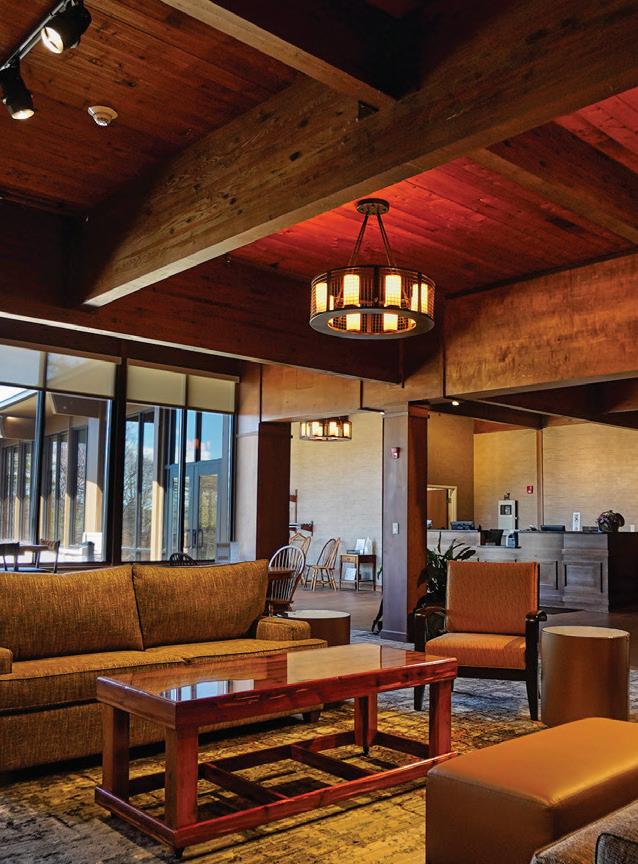
















FEB. 9–19 – The Lion in Winter, Van Wert Civic Theatre, 118 S. Race St., Van Wert, Thur.–Sat. 8 p.m., Sun. 2 p.m. Set during Christmas 1183, the play tells the wickedly amusing tale of King Henry II, his imprisoned queen (released only for the holiday), and their three entitled sons who vie for the throne in a double-dealing division of the kingdom. 419-238-9689 or www.vwct.org.
FEB. 17 – Mitchell Tenpenny, Veterans Memorial Civic and Convention Center., 7 Town Square, Lima, 7:30 p.m. Rising country star brings his debut tour to Lima. 419-224-1552 or www.limaciviccenter.com.
FEB. 19–20 – Horse-Drawn Sleigh Rides, Spiegel Grove, Hayes Presidential Library and Museums, Fremont. Celebrate Presidents Day by taking a horse-drawn sleigh or trolley ride through the estate, as President Hayes did when he lived here. $5 50 sleigh, $4 50 trolley, 2 and under free. 800-998-7737 or www.rbhayes.org.
FEB. 24–26, MAR. 3–5 – Walking Across Egypt, Encore Theatre, 991 N. Shore Dr., Lima, Fri./Sat. 8 p.m., Sun. 2 p.m. $8–$15. A spirited elderly widow decides to befriend and adopt an orphaned juvenile delinquent. 419-223-8866 or www.amitellers.org.
FEB. 25 – Burning Snowman Fest, Dock’s Beach House, 252 W. Lakeshore Dr., Port Clinton, 4–10 p.m. Say goodbye to winter with the burning of a giant snowman! Live music, food, and drink; all proceeds go to charity. 419-357-6247 or www.facebook.com/ BurningSnowman.
FEB. 25 – Menopause the Musical, Niswonger Performing Arts Ctr., 10700 St. Rte. 118 S., Van Wert, 3 p.m. $39–$69 419-238-6722 or www.npacvw.org.
MAR. 3 – Air Supply: “The Lost in Love Experience,” Niswonger Performing Arts Center, 10700 St. Rte. 118 S., Van Wert, 7:30 p.m. $65–$95 419-238-6722 or www.npacvw.org.
MAR. 4 – Glass City Wine Festival, Glass City Center, 401 Jefferson Ave., Toledo. $25–$40. Toledo’s premier wine, food, and shopping festival. 419-255-3300 or www.glasscitywinefestival.com.
MAR. 5 – Acoustics for Autism Music Festival, 300 block of Conant and surrounding area, Maumee,

Sat. noon–Sun. 2 a.m. Free for all ages. More than 80 bands on eight stages. Proceeds go to provide support and information, resources, and financial assistance to families affected by autism. 419-5149817 or www.acousticsforautism.com.
MAR. 9 – Toledo Symphony Concert, Sauder Village, Founder’s Hall, 22611 St. Rte. 2, Archbold, 7:30 p.m. $15–$18; free for students K–12 800-590-9755 or www.saudervillage.org.
MAR. 12–13 – Spring Festival of Crafts, Premier Banquet Hall, 4480 Heatherdowns Blvd., Toledo, Sat. 9 a.m.–4 p.m., Sun. 11 a.m.–4 p.m. Free. New location! See the new crafts, gifts, and decorating ideas from our crafters and artists. Collecting household and food items to benefit Toledo SeaGate Food Bank. 419-842-1925 or www.toledocraftsmansguild.org/shows.html.
MAR. 13 – My Fair Lady, Veterans Memorial Civic and Convention Center., 7 Town Square, Lima, 7:30 p.m. $45+. Entertainment Weekly calls this “a sumptuous new production of the most perfect musical of all time.” Directed by Bartlett Sher. 419-224-1552 or www.limaciviccenter.com.
FEB. 26 – West Virginia’s Premier Wedding Expo, The Morris, 411 N. 6th St., Clarksburg, 1–3 p.m. $15. Find everything you need to plan your special day. Meet the area’s leading wedding professionals in a fun environment with other engaged people. https:// infinitystudioseventplanning.com/wedding-expofebruary-2023
MAR. 11-12 – Kanawha Valley Railroad Association Model Train and Craft Show, Charleston Coliseum and Convention Center, 200 Civic Center Dr., Charleston, Sat. 10 a.m.–6 p.m., Sun. 10 a.m.–4 p.m. $5; 12 and under free. Vendors, clinics, and layouts. www.kvrailroad.org/events.html.
THROUGH FEB. 25 – “The Me Decade: A Look Back at the 1970s,” McKinley Museum, Keller Gallery, 800 McKinley Monument Dr. N., Canton, Tues.–Sat., 9 a.m.–4 p.m. $8–$10. Featuring ’70s fashion, décor, appliances, pop culture objects, and commemorative items from the nation’s bicentennial celebration in 1976. 330-455-7043 or http://mckinleymuseum.org.
FEB. 11 – Lake Erie Folk Fest, Shore Cultural Centre, 291 E. 222nd St., Euclid. 1–6 p.m., free music workshops, jams, and performances; 7:30 p.m., Grand Finale concert (tickets required). www.lakeeriefolkfest.com.
FEB. 17 – Kent BeatleFest, downtown Kent. Free. Come together for the annual celebration of the Fab Four’s music, featuring a stellar lineup of bands at various venues throughout the downtown. www.kentbeatlefest.com or www.facebook.com/ KentBeatleFest.
FEB. 24–MAR. 5 – Cleveland Auto Show, I-X Center, One I-X Dr., Cleveland. $15, Srs./C. (7–12) $12, under 7 free. Featuring concept, pre-production, and


production vehicles, plus an array of entertainment including sports and celebrity appearances, indoor test drives, vehicle giveaway, classic car competition, and more. www.clevelandautoshow.com.
FEB. 25 – Brite Winter, West Bank of the Flats, Cleveland, Sat. 3 p.m.–Sun. 1 a.m. Premier wintertime festival featuring diverse musical acts, artwork, fun outdoor activities, food and beer trucks, and more. www.britewinter.com.
FEB. 25 – Ohio Boating Education Course, Cleveland Watercraft Office, 1150 E. 49th St., Cleveland, 8 a.m.–5 p.m. Free. Fulfills Ohio’s mandatory boater education law requirements. 216-361-1212 or https://ohiodnr.gov/home/news-andevents/all-events/parks-wc-events.
MAR. 2–4 – Ohio Amish Country Home and Garden Show, Chestnut Ridge Sewing, 5079 Township Rd. 401, Millersburg. www.chestnutridgesewing.com.
MAR. 4–5, 11–12 – Maple Syrup Festival, Malabar Farm State Park, 4050 Bromfield Rd., Lucas, 12–4 p.m. Free. Experience the sugar camp at Malabar Farm with live historical demonstrations. Horse-drawn wagon rides, food, and maple products for sale. 419-892-2784 or www.malabarfarm.org.
MAR. 4–5, 11–12 – Maple Sugar Festival and Pancake Breakfast, Hale Farm and Village, 2686 Oak Hill Rd., Bath, 9 a.m.–5 p.m. Enjoy a hearty pancake breakfast and then head out to learn about tree tapping and maple sugar and syrup production. Watch evaporator demonstrations, hear stories about maple traditions, see seasonal cooking demonstrations, and more. www.wrhs.org/signature-events.
MAR. 5 – World Tour of Music: Les Délices, AkronSummit County Public Library, 60 S. High St., Akron,
necessary! 740-596-3030, www.facebook.com/ LakeHopeStatePark, or www.ohiodnr.gov.
FEB. 18 – Great Backyard Bird Count, Burr Oak State Park, 9:30–11:30 a.m. Free. We’ll identify and count all the birds we see on a 1 5-mile hike. Bring binoculars or borrow a pair from the nature center. Dress for the weather. 740-767-3570, www.facebook. com/BurrOakStatePark, or www.ohiodnr.gov.
2–4 p.m. Free, but reservations recommended. The Cleveland-based early music ensemble, led by baroque oboist Debra Nagy, will present an afternoon of medieval music. Firestone high school choir students will also perform. 419-853-6016 or www.ormaco.org.
MAR. 11 – Dane Vannatter Trio: “Come to the Cabaret,” Williams on the Lake, 787 Lafayette Rd., Medina, 6–9:30 p.m. $60. Enjoy an evening of favorite tunes from the American Songbook, as well as appetizers and drinks, a dinner buffet, desserts, and an auction to benefit ORMACO’s outreach programs. Book early to avoid disappointment: 419-853-6016 or www.ormaco.org.
MAR. 11–12 – Rocky River Spring Avant-Garde Art and Craft Show, Rocky River Memorial Hall, 21016 Hilliard Blvd., Rocky River, Sat. 10 a.m.–4 p.m., Sun. 11 a.m.–4 p.m. $3, under 12 free. Large show featuring artists and crafters selling their original handmade items. Full concession stand. 440-227-8794 or www.avantgardeshows.com.
MAR. 12 – Cleveland Comic Book and Nostalgia Festival, Doubletree by Hilton Cleveland/ Westlake, 1100 Crocker Rd., Westlake, 10 a.m.–4 p.m. $5; 6 and under free. Comic and toy vendors, guest comic creators, hourly prizes. 330-462-3985 or www.harpercomics.com
MAR. 12 – “Moustache Yourself: Gypsy Jazz,” Wadsworth Public Library, 132 Broad St., Wadsworth, 2–3 p.m. Free; reservations recommended. The northeast Ohio–based band Moustache will bring to life the style of music that originates with Romani guitarist Jean “Django” Reinhardt and French swing violinist Stéphane Grappelli. 419-853-6016 or www.ormaco.org.
as blacksmiths, tinsmiths, horn makers, leather workers, and cabinetmakers. Also gunmakers’ supplies and books. 740-373-3750 or www. campusmartiusmuseum.org.
FEB. 11 – Valentine’s Chocolate Extravaganza, 118 S. Paul St., Woodsfield, 10 a.m.–4 p.m. Contact 740-472-4848 with any questions.
FEB. 16 – Chamber of Commerce Annual Dinner, Pritchard Laughlin Civic Ctr., 7033 Glenn Highway, Cambridge. 740-439-6688 or https:// cambridgeohiochamber.com.
FEB. 17 – Great Backyard Bird Count, Lake Hope State Park, Nature Center, 27331 St. Rte. 278, McArthur, noon–4 p.m. Free. Come out to assist us with this global citizen science project to identify and count bird species. No prior birding experience
FEB. 18 – Stonehouse Trail Nature Hike, Salt Fork State Park, 14755 Cadiz Rd., Lore City, 11 a.m.–1 p.m., weather permitting. Free. Join the naturalist on a moderately difficult 1 8-mile nature hike to the historic Kennedy Stonehouse. Weather-appropriate clothes and sturdy shoes recommended. 740-630-6105 (John Hickenbottom), www.facebook.com/saltforkstatepark, or www.ohiodnr.gov.
FEB. 18 – “Skunk Cabbage Caravan,” Shawnee State Park Lodge, 3–5 p.m. Free. Carpool to Bear Lake in Shawnee Forest to see a beautiful winter blooming plant with a very interesting life history. Dress in layers, wear waterproof boots, and be prepared to walk a short distance off trail along a stream. 740-858-6652, www.facebook.com/ ShawneeStatePark, or www.ohiodnr.gov.
FEB. 18 – “Contemporary Gunmakers and Allied Artists,” Campus Martius Museum, 601 Second St., Marietta, 9:30 a.m.– 4 p.m. Features the work of several dozen traditional gunmakers as well
FEB. 25 – “Visit the Nature Nook,” Shawnee State Park Lodge, 4404 St. Rte. 125, West Portsmouth, noon–3 p.m. Free. Visit with our animal ambassadors in the Shawnee Lodge Nature Nook. 740-858-6652, www.facebook.com/ShawneeStatePark, or www.ohiodnr.gov.
MAR. 5 – “An Afternoon with Fran Leibowitz,” Peoples Theatre, Marietta, 3 p.m. Free. Marietta College welcomes the Emmy-nominated author, journalist, and social commentator. www.marietta. edu/event/esbenshade-series-fran-lebowitz or www.peoplesbanktheatre.com.
MAR. 10–12 – Home, Garden, and Business Expo, Pritchard Laughlin Civic Ctr., 7033 Glenn Hwy., Cambridge. 740-439-6688 or www. cambridgeohiochamber.com.
MAR. 11 – “An Insider’s Tour,” Campus Martius Museum, 601 Second St., Marietta, 1:30–3:30 p.m. $10 + museum admission. Take a deeper look at the early settlers who are the focus of David McCullough’s book The Pioneers. Tour the home of General Rufus Putnam. Registration required. 740373-3750 or www.campusmartiusmuseum.org.
FEB. 17 – Great Backyard Bird Count 4-Mile Hike, Alum Creek State Park, New Galena Picnic Area, 4550 Africa Rd., Galena, 8:30–11 a.m. Free. We will identify and count all the birds we see and hear on our hike. Dress for the weather; bring binoculars. 740513-6382 (Lindsey Krusling) or www.facebook.com/ AlumCreekStatePark.
FEB. 17–19 – Chasing Charming, Marion Palace Theatre, 276 W. Center St., Marion, Fri./Sat. 7 p.m., Sun. 2 p.m. $15–$22. Featuring a cast of local youth. 740-383-2101 or www.marionpalace.org.
FEB. 18 – “Basic Landscape Design,” Franklin Park Conservatory, 1777 E. Broad St., Columbus, 11 a.m.–1 p.m. $20–$25. Learn the basic design principles of color, texture, scale, rhythm, repetition, and form and how these principles can be used to create a customized garden mixed with trees, shrubs, perennials, annuals, and bulbs. Register at www. fpconservatory.org/events/basic-landscape-design.
FEB. 18 – Winter Hike, A.W. Marion State Park, 7317 Warner-Huffer Rd., Circleville, 2–4 p.m. Free. Join us for a 2-mile hike along the northern shore of Hargus Lake. Moderately difficult trail; may not be suitable for young children or those with a physical impediment. Dress for the weather; bring water. 740-527-4008
or https://ohiodnr.gov/go-and-do/plan-a-visit/find-aproperty/a-w-marion-state-park.
FEB. 18–26 – Spring Home and Garden Show, Ohio Expo Center, Bricker and Celeste Bldgs.., 717 E. 11th St., Columbus, Sat. 11 a.m.–8 p.m., Sun. 11 a.m.–6 p.m., weekdays 11 a.m.–7 p.m. $8–$10; 17 and under free. Connect with local experts for advice and find the best products and services for making every space of your home more functional and beautiful. www.dispatchshows.com/home-and-garden-show.
FEB. 19 – Fairfield County Antique Tractor Club Toy and Tractor Show, Fairfield Co. Fgds., AAA Bldg., 157 E. Fair Ave., Lancaster, 9 a.m.–3 p.m. $2, under 12 free. Two large, heated buildings with toys and displays. Lunch served by local 4-H group. 740-407-2347 (Doug Shaw) or www.fairfieldcountytractorclub.com.
FEB. 24 – Michael Cavanaugh, Marion Palace Theatre, 276 W. Center St., Marion, Fri./Sat. 7:30 p.m. $28–$38. Tony and Grammy–nominated star of the Broadway musical Movin’ Out performs the greatest hits of Billy Joel and Elton John. 740-383-2101 or www.marionpalace.org.
FEB. 25 – Paul Francis Quartet, Majestic Theatre, 45 E. Second St., Chillicothe, 7:30 p.m. $15–$20. Grammy Award-winning drummer, educator, and Chillicothe native Paul Francis returns to perform at the historic theater. www.majesticchillicothe.net.
FEB. 25–26 – Maple Syrup Tours, Dawes Arboretum, Main Shelter House, 7770 Jacksontown Rd., Newark, 1–3 p.m. Walk along the trail to discover the many ways syrup has been made throughout history. Peek inside the log cabin, and taste a sample of this all-natural treat! Tours are first come, first served. 740323-2355 or www.dawesarb.org.
FEB. 25–26 – Scott Antique Market, Ohio Expo Ctr., Voinovich Bldg., 717 E. 17th Ave., Columbus, Sat. 9 a.m.–6 p.m., Sun. 10 a.m.–4 p.m. Free; $5 parking. 800 exhibit booths. info@scottantiquemarket.com or www. scottantiquemarkets.com.
FEB. 20 – Monday Music Night: McIntyre Bluegrass Trio, Centerville Library, 111 W. Spring Valley Pike, Centerville, 7–8 p.m. Free. Enjoy lively banjo, fiddle, and guitar music performed by Vernon and Kitty McIntyre and guest Robert Campbell. 937-433-8091
FEB. 25 – TCA Ohio River Chapter Train Meet, American Legion Hall, 11100 Winton Rd., Cincinnati, 8 a.m.–2 p.m. for members; 10 a.m.–2 p.m. for the public. 513-256-9955 (Dan Miller). steamsparkles@ aol.com, or www.tcatrains.org/event/ohio-riverchapter-train-meet-7
MAR. 2–5 – Arnold Sports Festival and Arnold Expo, Columbus Convention Center, 400 N. High St., Columbus, Fri./Sat. 10 a.m.–7 p.m., Sun. 10 a.m.–4 p.m. Three-day, daily, and individual competition tickets. Nearly 1,000 booths of the latest in sports nutrition, apparel, and equipment, plus four stages of unique, non-stop competitions and entertainment. www.arnoldsports.com.
MAR. 4 – “Planning a Year of Vegetables,” Franklin Park Conservatory, 1777 E. Broad St., Columbus, 1–2:30 p.m. $20–$25. From seed selection to vegetable varieties and everything in between, you will learn how to plan a garden to provide you with a full year of vegetables, grown in your own yard! Register at www. fpconservatory.org/events/vegetable-planning.
MAR. 5 – Buckeye Comic Con, Courtyard Marriott Columbus West, 2350 Westbelt Dr., Columbus, 10 a.m.–4 p.m. $5; 6 and under free. Comic and toy vendors, guest comic creators, hourly prizes. 330-462-3985 or www.harpercomics.com.
MAR. 10–12 – All American Columbus Pet Expo, Ohio Expo Center, Bricker and Ohio Bldgs., 717 E. 17th Ave., Columbus, Fri. noon–8 p.m., Sat. 10 a.m.–7 p.m., Sun. 11 a.m.–5 p.m. Includes the Pet Expo, the All About Cats Expo, and the Mega Pet Adoption. www.allaboutcatsexpo.com.
MAR. 11 – Columbus Beer Festival, COSI, 333 W. Broad St., Columbus, 8–11 p.m. $50; early admission at 7 p.m., $65. Featuring over 50 breweries, 150 beers, and access to all the museum’s exhibits, plus some special surprises. Admission includes beer tastings, with food sold separately. www.columbusbrewfestival.com.
MAR. 12 – New Albany Symphony Orchestra: “Ellington Price Still,” McCoy Center, 100 W. Dublin-Granville Rd., New Albany, 3–4 p.m. $14–$22 Featuring the works of Duke Ellington, Florence Price, and William Grant Still. 614-469-0939 or www.newalbanysymphony.com.
11 a.m.–5 p.m., $10 admission good both days. Preview 9–11 a.m., $30; includes show pass. Under 18 free. One of the best modern design shows in the country. Over 50 sellers offering midcentury furniture, lighting, decorative objects, housewares, pop culture memorabilia, and fashion. 513-951-6626 or www.20thcenturycincinnati.com.
FEB. 25–26, MAR. 2–5 – Cincinnati Home and Garden Show, Duke Energy Convention Center, 525 Elm St., Cincinnati, Wed.–Fri. 11 a.m.–8 p.m., Sat. 10 a.m.–9 p.m., Sun. 10 a.m.–6 p.m. $13 online, $15 at door. More than 400 exhibitors. www.cincinnatihomeandgardenshow.com.
THROUGH MAR. 29 – Bluegrass Wednesdays, Vinoklet Winery, 11069 Colerain Ave., Cincinnati, Wed. 6:30–8:30 p.m. Free entertainment by Vernon McIntyre’s Appalachian Grass. Reservations recommended. 513-385-9309, vinokletwinery@fuse. net, or www.vinokletwines.com.
FEB. 17–19 – Miami County Home and Garden Show, Hobart Arena, 255 Adams St., Troy, Fri. 2–6 p.m., Sat. 10 a.m.–6 p.m., Sun. 10 a.m.–4 p.m. $6; 12 and under free. We have everything from outdoor specialists to kitchen and bath renovators to help you plan your next home improvement project. 937339-7963 or www.miamicountyhomeshow.com.
FEB. 18–26 – Princess and Frog, Taft Theater, 317 E. 5th St., Cincinnati. $8–$54. Check website for performance times. 513-569-8080 or www. thechildrenstheatre.com.
FEB. 25 – “Early Signs of Spring,” Rocky Fork State Park, 9800 N. Shore Dr., Hillsboro, 1–2:30 p.m. Free. Join a naturalist on a guided 3-mile hike to search for early signs of spring. 937-393-4284 or www.ohiodnr.gov.
FEB. 25 – Winter Hike, St. Rte. 370, Yellow Springs. Free. Guided 6-mile hike along Little Miami River, departing from John Bryan State Park and stopping midway at Clifton Gorge Nature Center, where hot cocoa and snacks will be served. 937-537-6173 or www.ohiodnr.gov.
FEB. 25–26 – Dayton Off-Road and Outdoor Expo, Roberts Centre, 123 Gano Rd., Wilmington, Sat. 9 a.m.–6 p.m., Sun. 10 a.m.–4 p.m. $5; 12 and under free. Vendors, Jeeps, monster trucks, and more! Fun for the whole family. 877-428-4748 or www. daytonoffroadexpo.com.
FEB. 25–26 – 20th Century Cincinnati, Sharonville Convention Center., 11355 Chester Rd., Cincinnati,
MAR. 7 – Downtown Downhome Bluegrass, Miami Downtown Downhome, 221 High St., Hamilton, 7–8:30 p.m. Free. Featuring Vernon McIntyre’s Appalachian Grass. Enjoy an evening of lively bluegrass music with lightning-fast instrumentals, close harmonies, and entertaining novelty songs. For more information, email vaughnjh@gmail.com.
MAR. 11–12 – Sweet Spring Marketplace, Montgomery Co. Fgds., 645 Infirmary Rd., Dayton, Sat. 10 a.m.–5 p.m., Sun. 11 a.m.–4 p.m. $5; 12 and under free. Early-bird shopping Sat. 8–10 a.m., $7. Over 80 exhibits filled with shabby chic, repurposed, vintage, primitive, farmhouse, country, contemporary, jewelry, clothing, bath and body, home décor, and yummy foods. www.montcofair. com/event/sweet-spring-marketplace-3













For May, send “Junior gardener” by Feb. 15; for June, send “Hook, line, and sinker” by March 15.
Upload your photos at www.ohiocoopliving.com/memberinteractive. Your photo may be featured in our magazine or on our website.








